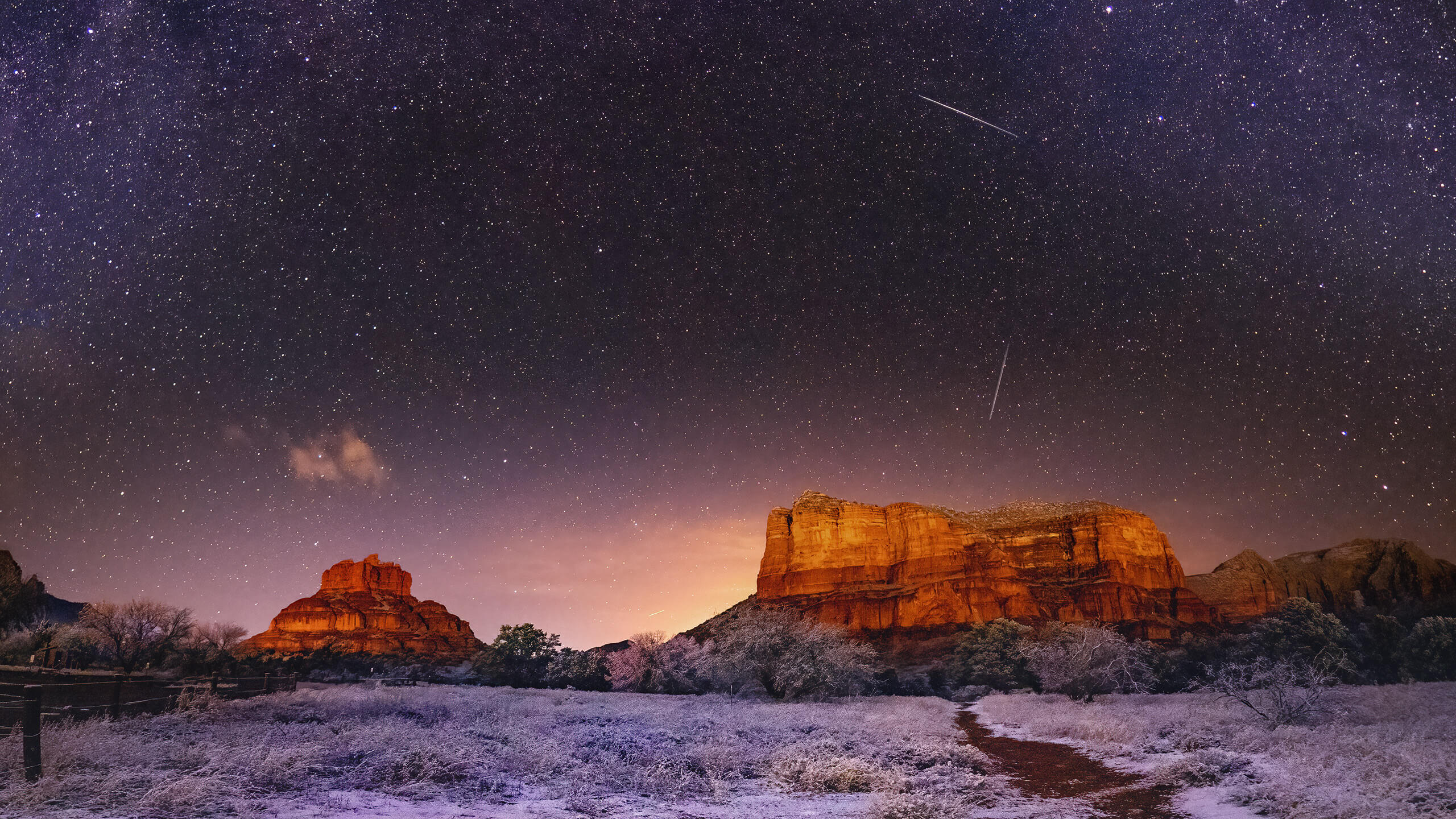Night skies are quite beautiful here in Sedona, Arizona. I look for almost any excuse these days to point my cameras toward the heavens. The latest ‘excuse’ was the Geminids on December 13th. Here’s the story of capturing and post processing this image.
How do you know?
How do you learn of astronomical events? The best info I find on the sky for photography is through the APP Photopills. It lists all meteor showers and the expected number of strikes, also known as the best time to photograph. It also tells you where the origination of most of the shower will be. Add to that the Night AR view where you can overlay the night sky events over your scene and you have an amazing planning tool. This is not a tutorial on Photopills but let me tell you it will be the best 10 dollars and ninety-nine cents you can spend on info for photographing the night sky!
Geminids
I wasn’t able to get where I wanted to go due to the snow and wet, muddy trails. These images were made from the parking lot with the view of Bell Rock and Courthouse Butte in Sedona at the Bell Rock Pathway Trailhead. I set up two cameras, both Olympus OM-D E-M1 Mark III. Lenses were 7-14mm f/2.8 M. Zukio Pro and the 8mm fisheye f/1.8 Pro M. Zukio. I’ll share a bit more about shooting gear and set up in another article.
Camera settings
The cameras were set to 20 seconds at ISO 6400 with one second between exposures. When you are setting up your timing make sure that all of your settings are correct. I couldn’t figure why one of my cameras was not firing immediately after the previous exposure. Accidentally the interval was set to one minute and one second between exposures. I probably lost forty-five minutes of frames due to that mistake.
Manual exposure with a consistent white balance is important. Check your Histogram with a test shot to make sure you are not underexposing the scene. If you severely underexpose, which is easy to do, you will get tons of noise as you try to open up the shadows.
A great feature on this Olympus camera is Starry Autofocus. In that mode when the camera indicates it is in focus there is no need to worry your stars will be in focus. That was always an issue. Used to hate coming home from a night shoot and be slightly out of focus!
Any automatic settings allowing the camera to make decisions can lead to changes that will appear as flicker if you decide to turn the frame sequence into a time-lapse. More on that in another article.
Post production
I selected all the frames. Opened in Adobe Camera RAW and made global adjustments. I moved to the “Masks” area of ACR and enhanced the Milky Way which was arching over the scene and also used two “Linear Gradients” to adjust the sky and foreground separately.

Back into Adobe Bridge, select the images that contained meteor streaks. Not a bunch in this case but the story works. Opened my master image and meteor photos. Aligned the background with meteor images and used masks to allow the meteors to show.
Added a few adjustment layers with masks to correct color and tones. Almost done.
Since this set of images was made with the fisheye lens, I used the “Transform Tool” to straighten out the horizon.
Now it’s done.
Yours in Creative Photography, Bob
Source link





Leave a Reply